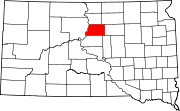
Dunn Center is a city in Dunn County, North Dakota, United States. The population was 227 at the 2020 census. Dunn Center was founded in 1914.

Steele is a city in Kidder County, North Dakota, United States. It is the county seat of Kidder County. The population was 665 at the 2020 census.

Mohall is a city in Renville County, North Dakota, United States. It is the county seat of Renville County. The population was 694 at the 2020 census. Mohall is part of the Minot Micropolitan Statistical Area.

Amidon is a city in and the county seat of Slope County, North Dakota, United States.

Tyndall is a city in and the county seat of Bon Homme County, South Dakota, United States. The population was 1,057 at the 2020 census.
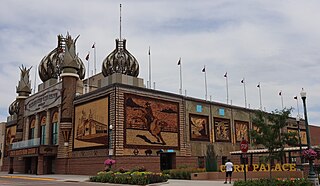
Mitchell is a city in and the county seat of Davison County, South Dakota, United States. The population was 15,660 at the 2020 census making it the sixth most populous city in South Dakota.

Webster is a city in and the county seat of Day County, South Dakota, United States. The population was 1,728 at the 2020 census.

Timber Lake is a city in and the county seat of Dewey County, South Dakota, United States. The population was 509 at the 2020 census.

Ipswich is a city in and county seat of Edmunds County, South Dakota, United States. The population was 928 at the 2020 census.

Edgemont is a city in Fall River County, South Dakota, United States. The population was 725 at the 2020 census. The city lies on the far southern edge of the Black Hills in southwestern South Dakota.

Faulkton is a city in and county seat of Faulk County, South Dakota, United States. The population was 826 at the 2020 census. The city's nickname is "The Carousel City".

Gregory is a city in western Gregory County, South Dakota, United States. The population was 1,221 at the 2020 census.

Miller is a city in and county seat of Hand County, South Dakota, United States. The population was 1,349 at the 2020 census.

Alexandria is a city in central Hanson County, South Dakota, United States. The population was 649 at the 2020 census. It is the county seat of Hanson County.
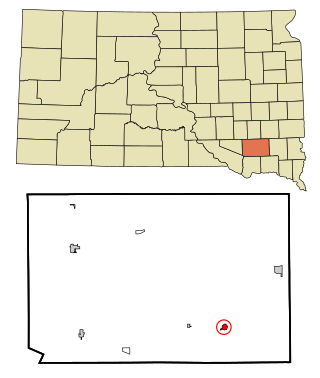
Menno is a city in Hutchinson County, South Dakota, United States. The population was 614 at the 2020 census.
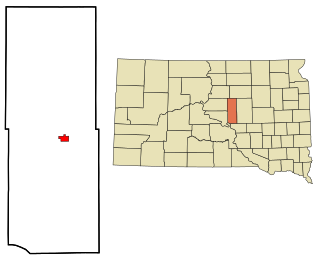
Highmore is a city in and county seat of Hyde County, South Dakota, United States. The population was 682 at the 2020 census.

Murdo is a city in and the county seat of Jones County, South Dakota, United States. The population was 475 at the 2020 census.

Britton is a city in and the county seat of Marshall County, South Dakota, United States. The population was 1,215 at the 2020 census.

Howard is a city in Miner County, South Dakota, United States. The population was 848 at the 2020 census. It is the county seat and most populous city in Miner County.
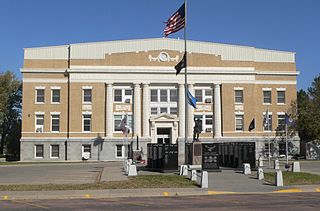
Winner is a city in central Tripp County, South Dakota, United States. The population was 2,921 at the 2020 census. It is the county seat of Tripp County. Winner also serves as the administrative center of neighboring Todd County, which does not have its own county seat. The nearest airport is Winner Regional Airport.






















